Get PeakVisor App
Sign In
Search by GPS coordinates
- Latitude
- ° ' ''
- Longitude
- ° ' ''
- Units of Length

Yes
Cancel
Share ×

Scan the QR code and open PeakVisor on your phone
❤ Wishlist ×
Choose
Delete
A land of picture-perfect landscapes, the Italian region of Tuscany is perhaps best known for its rolling hills and cypress trees, as well as its status as the home of the Italian Renaissance. There are 4383 named mountains in Tuscany, the highest of which is Monte Prado (2,054 m/6,739 ft) and the most prominent of which is Monte Amiata (1,738 m/5,702 ft).

Located in west-central Italy along the shores of both the Ligurian and Tyrrhenian seas, the region of Tuscany encompasses an area of 23,000 sq. km (8,900 sq. mi) along with 633 km (390 mi) of coastline. Tuscany has a population of around 3.8 million inhabitants, making it Italy’s fifth-largest region.
Tuscany borders the regions of Liguria to the northwest, Emilia Romagna to the north, Marche and Umbria to the east, and Lazio to the south. The ten provinces that make up Tuscany are: Arezzo, Firenze, Grosseto, Livorno, Lucca, Massa-Carrara, Pisa, Pistoia, Prato, and Siena. The regional capital is Florence (Firenze).
Situated off the coast of Tuscany, there’s an archipelago of seven main islands called the Tuscan Archipelago. Elba is the largest island in the archipelago and it’s also the third-largest island in Italy after Sicily and Sardinia.

Both the Tiber and Arno rivers run through the region. The Arno is the region’s main river, and it originates from the Apennines. Many of Tuscany’s most significant cities line its banks, such as Florence, Empoli, and Pisa.
The Apennine Mountains border Tuscany to the north and east, while the Apuan Alps border the region to the northwest. To the west, the region is bordered by both the Ligurian and Tyrrhenian seas.
Tuscany is home to many national parks and protected areas thanks to its varied landscape.
The three national parks in Tuscany are:

Tuscany also contains three regional parks:

The region is also home to 2 marine protected areas, over 50 natural protected areas of local interest, 35 state reserves, over 40 regional reserves, and many Natura 2000 protected sites.
Tuscany is characterized by its large variety of landscapes, from the jagged peaks of the Apuan Alps to the undulating hills of the Crete Senesi. The region is perfect for technical hikes, as well as for long-distance walking and biking.
While hilly terrain dominates almost two-thirds of the region (67 percent), mountains make up around 25 percent of the landscape. Meanwhile, just 8 percent of the terrain is occupied by plains, mostly around the Arno Valley or by the coast.
The Apennines and Apuan Alps border Tuscany to the north. As you move southward, these hills eventually transition into the pre-Apennine hills, which include Monte Albano and Monte Pratomagno.
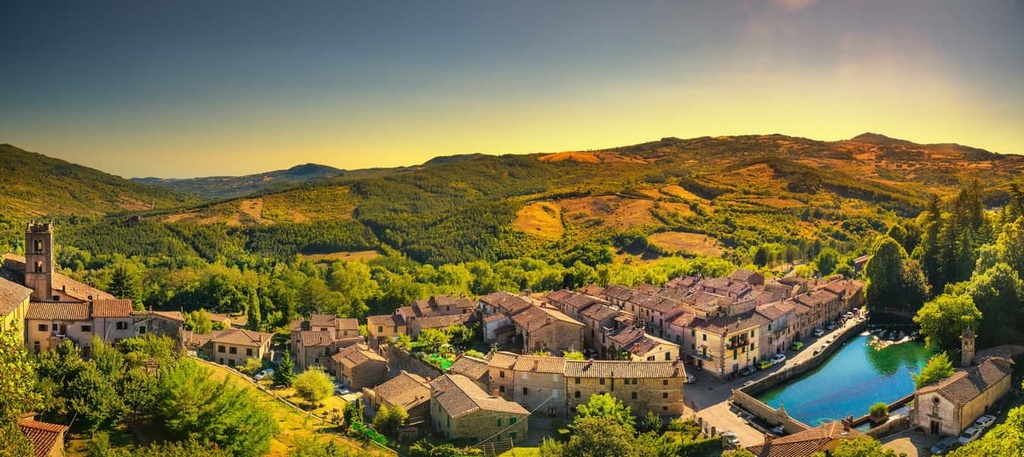
To the south of Siena, the land gives way to plateaus and hills such as the Metallifere Hills, and Monte Amiata, the latter of which is of volcanic origin but is considered to be extinct. The plains of the region consist of interior valleys and coastal flatlands.
Although Monte Amiata is an extinct volcano, there is still volcanic activity that occurs deep under the surface of the mountain. It’s thanks to this underground volcanic activity that many hot springs can be found in the region, such as the Saturnia hot springs, Bagni Vignoni, Chianciano Terme, and Bagni di San Filippo.
There’s also an active geothermal energy site at Larderello, where high-pressure sulphuric and boric acids are channeled into electric generators that supply energy to over one million Italian homes.
The highest peak in the Tuscan Apennines is Monte Prado, which also happens to be Tuscany’s high point. The highest Tuscan peak in the Apuan Alps, a sub-range branching off from the Apennines that is famed for its Carrara marble, is Monte Pisanino.
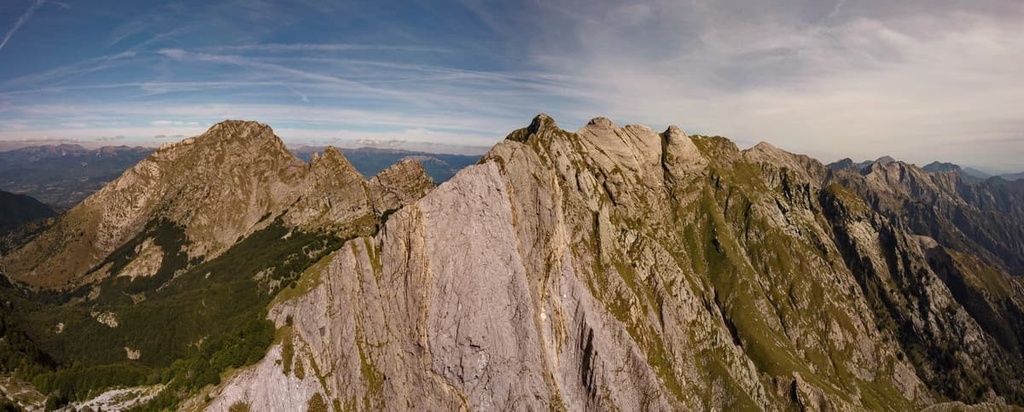
Both the Apennines and Apuan Alps began to form around 20 million years ago and are therefore much younger than the Alps. Most of the range consists of sedimentary rock that formed as a result of the ancient Tethys Sea.
After the Alps formed, the European and African tectonic plates continued to collide. This helped to create the Apennines from rocks that include limestones, shales, dolomites, and sandstones. Due to extreme pressure in the Apuan Alps, much of the limestone in the region was subsequently transformed into marble.
Tuscany’s famed rolling hills, however, are mostly composed of clays, calcites, and volcanic ash. Many of the soils in the area are rich in volcanic ash and metals, due to both the erosion of the Livorno and Metallifere hills and ancient volcanic eruptions in the area.
The hills of Tuscany also contain large quantities of salts as the landscape was once covered by the ancient Tethys Sea. Many aquatic fossils have been found in the area, too, including that of a 10 m (33 ft) long whale, which is believed to be around 3 million years old! You can see many of these fossils at Florence’s Natural History Museum.
The Metallifere hills are also rich in metals such as iron, copper, silver, lead, and mercury, as well as several sulfates.

Other notable geological features of Tuscany are the Cliffs (Balze) of Volterra, which are located just a stone’s throw from the town of Volterra. The cliffs are the result of a natural soil erosion phenomenon that has washed away many ancient churches, streets, and even a necropolis in the region.
Tuscany is characterized by a mixture of environments, from rugged mountains and dense forests in the north to the cultivated hills that make up the majority of the region.
The best places to experience the region's diversity of fauna and flora are in its three national parks. Here’s a quick look at the plants and animals that you can find in each of Tuscany’s national parks.

Appennino Tosco-Emiliano National Park is home to a range of environments from grasslands and moorlands to steep cliffs, lakes, and river drainages. Fauna in the park includes wolves, red deer, roe deer, European mouflon, and golden eagle.
Casentino Forest National Park is home to fir, beech, mountain maple, and mixed woodlands. The park is mainly covered by forest and is also home to flowers such as purple saxifrage (Saxifraga oppositifolia), and red bilberry, both of which are plants that are more commonly associated with the high mountains.
Roe deer, fallow deer, wild boar, European mouflon, and wolves all roam through the woodlands of the park. Additionally, the park is home to over 100 nesting species of birds, including the Alpine tree creeper, bullfinch, tawny owl, and woodpecker.
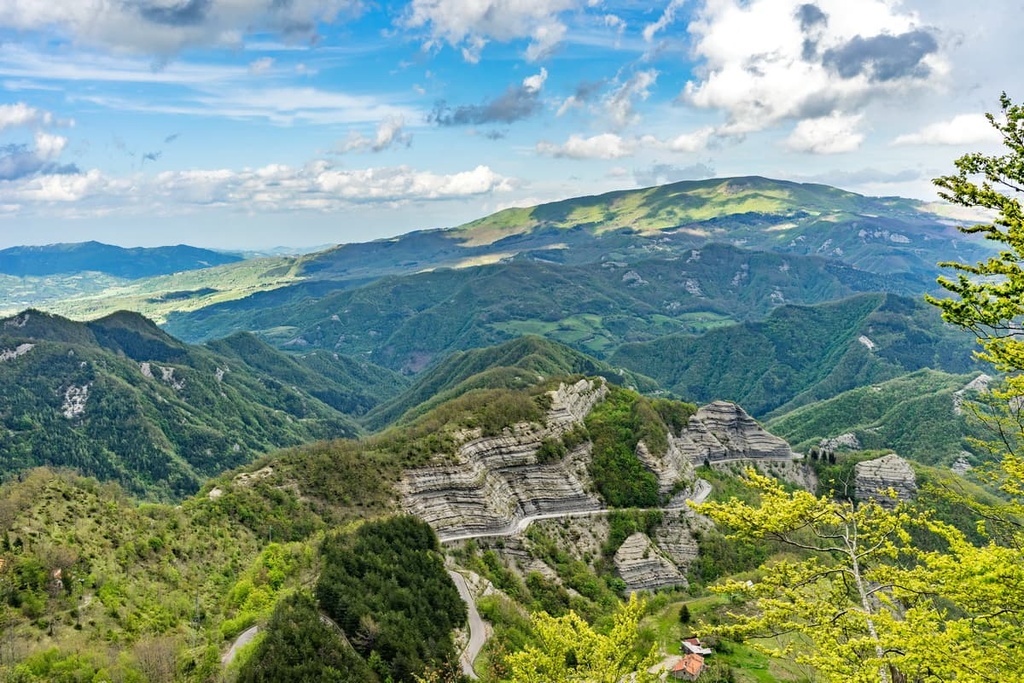
Arcipelago Toscano National Park is home to an archipelago of seven main mountainous and hilly islands that feature a Mediterranean climate.
Flora found on these islands includes chestnut trees, European yew, hop hornbeam, Mediterranean maquis, strawberry trees, rosemary, and lavender.
Some of the many wildlife species that can be found on the islands include citril finches, Sardinian tree frogs, and leaf-fingered geckos. The waters around the islands are also protected and are home to plenty of sea life such as dolphins and scorpionfish.

Tuscany has been inhabited for millennia. However, the Etruscans were the first main civilization in the region. During the height of their civilization, the Etruscans created a transportation infrastructure and implemented agriculture and mining in the area.
While the Etruscans are often overlooked in favor of their eventual conquerors, the Romans, the Etruscans made many indirect and direct contributions to Roman society that continue to influence our lives to this day.
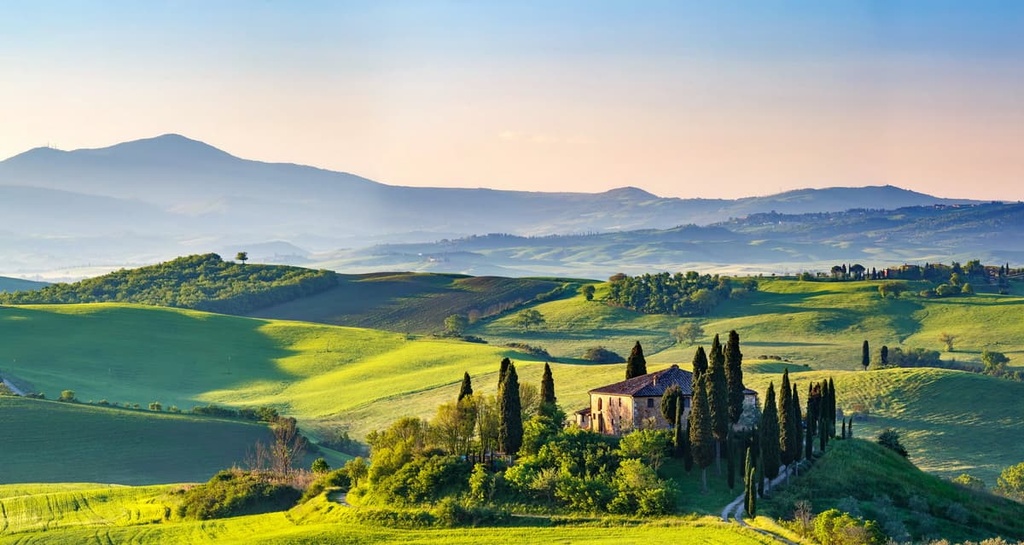
In particular, the Etruscans developed their own alphabet-based writing system that we now call the Etruscan alphabet, which was derived from an early Greek alphabet called the Euboean alphabet. This Euboean alphabet was, in turn, influenced by the early Phoenician alphabet. Ultimately, the Romans adopted many aspects of the Etruscan alphabet and it evolved into the Latin alphabet that we use in many languages to this day.
However, while the legacy of the Etruscans lives on, the Etruscan civilization reached its peak during the seventh and sixth centuries BCE. The Etruscans eventually ceded their territory to the Romans and were subsumed into the Roman Republic.
The Romans established the well-known cities of Lucca, Pisa, Florence, and Siena in what is now Tuscany. After the fall of the Roman Empire, Tuscany eventually emerged as a political entity with its own rulers, and, by the twelfth century, Tuscan cities began to rise in importance.
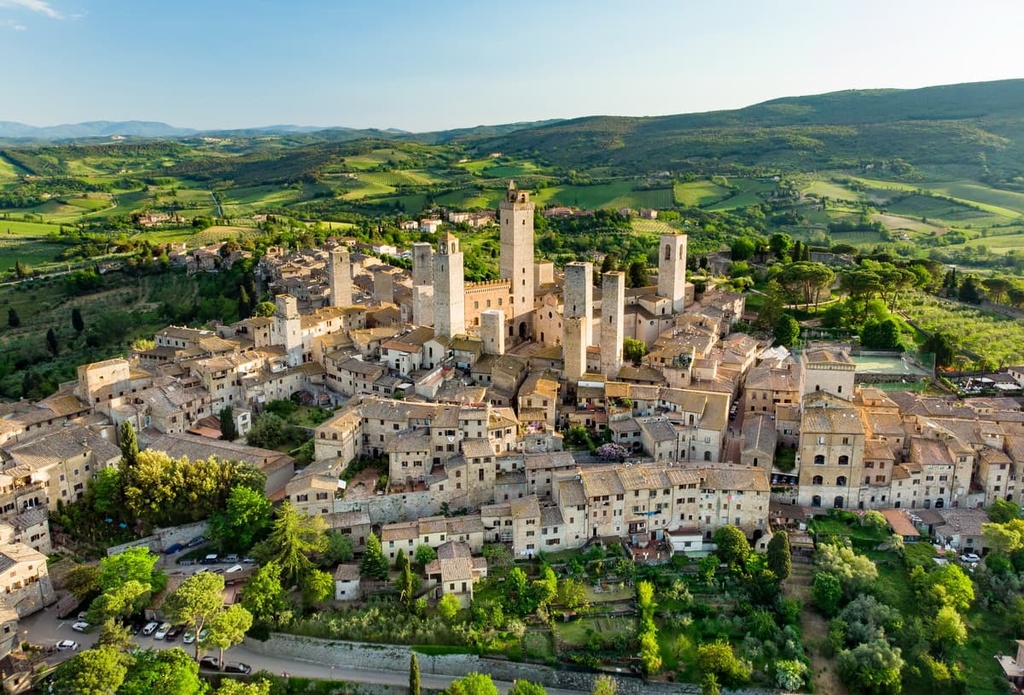
By the Middle Ages, cities such as Florence and Pisa had become wealthy due to their textile manufacturing, trade, banking, and agriculture industries. That said, the region’s cities were often at war with each other during the Middle Ages. Over time, Florence succeeded in becoming the cultural capital of Tuscany.
Florence came to be ruled by a council called the Signoria of Florence. The council consisted of a group of wealthy Florentines, including the Medici family.
The House of Medici influenced and led Florence from the 1400s until the 1700s. Members of the family rose to great prominence in European society as the House of Medici produced two queens of France, four popes, and various dukes and princes within both Italy and France.

Under the Medici’s patronage and that of other wealthy Florentine families, art and literature flourished in Florence. This eventually led to the start of the Italian Renaissance.
While the Renaissance took place across what is now Italy and Europe, Florence was arguably the movement’s starting point and one of its hubs. The city was home to many famous individuals during this time, including Dante, Macchiavelli, Michelangelo, Brunelleschi, Botticelli, and Leonardo da Vinci, to name a few.
The Medici Family became the Grand Dukes of Tuscany until the house’s subsequent decline in the eighteenth century. The last Medici Grand Duke was Gian Gastone de' Medici, who died in 1737, and the last lineal descendant of the family’s main branch was Anna Maria Luisa de' Medici, who died in 1743.
After the extinction of the dynasty, Tuscany was ruled by the Austrian Dukes of Lorraine until Italian independence and the creation of the Kingdom of Italy in 1861. Florence was the capital of the Kingdom of Italy from 1865 to 1871 before the capital was moved to Rome.
Today, Tuscany is a popular tourist spot that attracts millions of visitors each year to its museums, galleries, and churches, where masterpieces can be found around every corner. It is also a producer of olive oil, cheeses (such as pecorino), wines (such as Chianti Classico, Brunello di Montalcino, and Vino Nobile di Montepulciano), and cereals (such as wheat).

There are countless hiking areas in Tuscany, so there’s sure to be a trek in the region to suit all tastes, from mountain trails to pilgrim paths. Here are some of the best hikes in Tuscany to check out during your next trip to the region.
At Apennino Tosco-Emiliano National Park, you can experience Tuscany’s coastline and the scenic countryside of Emilia Romagna between the Mediterranean Sea and the Po valley.
From rugged mountain paths and old shepherd trails to meadows, forests, and mountain summits, there are plenty of paths for hikers of all abilities in the national park. The north side of the park is best suited for hiking as the slopes in this area are more gradual, allowing easier access to the region’s peaks and forests.

A peaceful oasis stretching between Tuscany and Emilia Romagna, Casentino Forest National Park offers over 650 km (400 mi) of trails that are designed for hiking, biking, and horse riding.
Here, you’ll find forests, peaks, waterfalls, lakes, and sanctuaries. That means that there’s something for everyone to love during a trip to Casentino Forest National Park.

At Arcipelago Toscano National Park, you can enjoy the Mediterranean climate and turquoise sea surrounding the seven islands of the Tuscan Archipelago. While in the park, you can walk along old communication routes that were once used to connect settlements and enjoy the region’s sweeping views.
There’s also a myriad of hiking opportunities in the park, despite the fact that it’s not a huge area. Many of these paths are suitable for families while others are designed for more experienced hikers.

From the jagged peaks of the Apuan Alps Regional Park, you can enjoy views over the Ligurian Sea. Apuan Alps Regional Park is also home to pristine lakes, incredible caves, and Alpine-like landscapes.
The park itself also offers plenty of excellent hikes, such as the Monte Forato Loop, so visitors can enjoy this wild and rugged environment at their own pace.
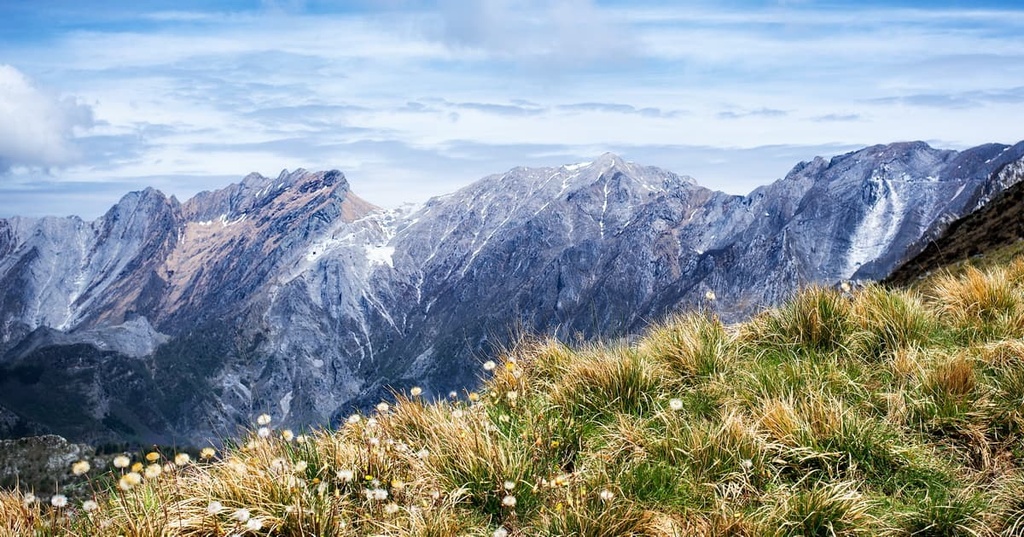
In Crete Senesi and Val d’Orcia, you can meander your way through picture-perfect landscapes and visit medieval towns that are perched precariously on rugged hilltops.
The Crete Senesi and Val d’Orcia region is the perfect destination for gravel biking and long hiking trips in Tuscany. The most well-known path in this area is the Via Francigena, which is an ancient pilgrimage route.

There are many pilgrimage routes that pass through Tuscany. You can hike along these routes as part of a day hike, or you can complete each route in full.
Some of the best-known pilgrimage routes that pass through Tuscany include:

You’ll be spoiled for choice when looking for accommodation in Tuscany, as there are many cities, towns, and small medieval borghi to base yourself in while traveling through the region. There are also many farm stays (agriturismos) dotted throughout Tuscany where you can sample the best of the region’s cuisine.
Here are some of the best cities to check out during your next visit to Tuscany.
Florence, Tucany’s capital of culture, is not to be missed. There are many museums and galleries in Florence where you can admire the masterpieces of the Renaissance, including the esteemed Uffizi Gallery, which once belonged to the Medici family.

Florence offers many different accommodation options for visitors, from B&Bs to luxury hotels. From Florence, you can easily reach the hills of Monte Ceceri, the Chianti hills, and Casentino Forest National Park.
The city of Pisa is home to the famous Leaning Tower of Pisa and is a great place to stay if you’re looking to visit the Apuan Alps Regional Park, which is located only an hour and a half away by car.
From Pisa, you can also get to Appennino Tosco-Emiliano National Park in just under two hours. Pisa is even located close to a very family-friendly coastline, and it is easy to get to from the cities of Lucca, Pistoia, and Florence.
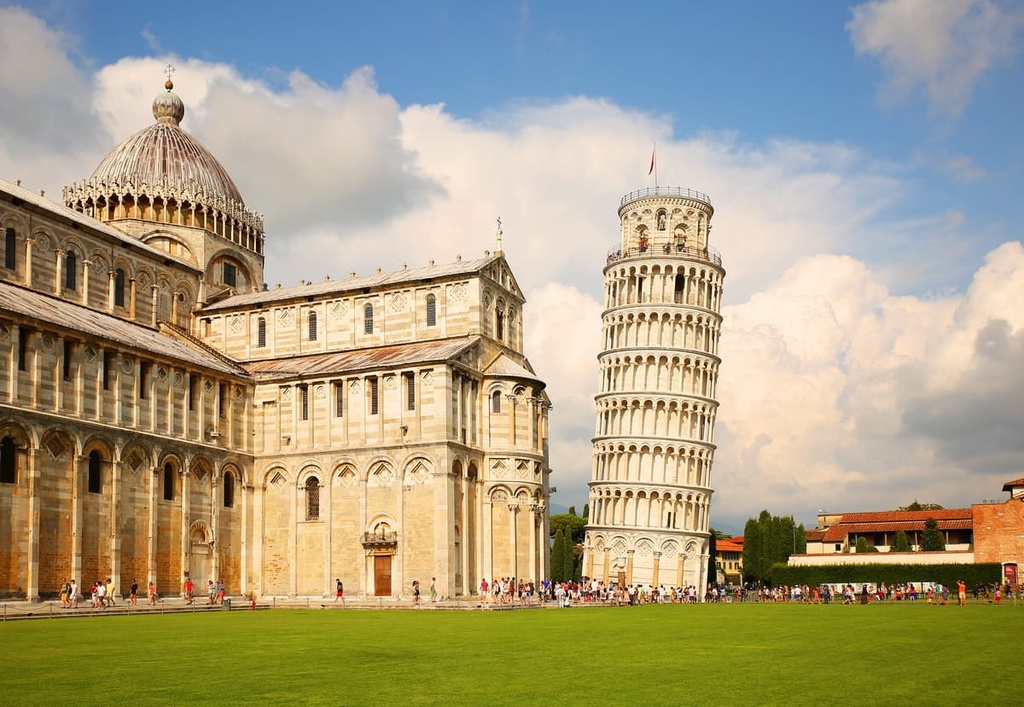
Siena is a city located in north-central Tuscany. From the city, you can easily get to the beautiful Val d’Orcia and Crete Senesi.
Here you can walk, bike, and ride horses along gravel roads, taking in the beauty of the landscape. While in Siena, be sure to visit the nearby hilltop towns of Montalcino and Montepulciano to sample some of the best Tuscan wines.

Nestled in the southern part of Tuscany along the coast, Grosseto is a lively city and a great access point for visits to the Tuscan islands and the Arcipelago Toscano National Park. It is also located just a short distance away from Maremma Regional Park.
Grosseto is situated close to some of southern Tuscany’s most beautiful beaches, such as Cala Violina. You can easily get to Grosseto by train from Florence, Pisa, Rome, and even Genoa.

Explore Tuscany with the PeakVisor 3D Map and identify its summits.








